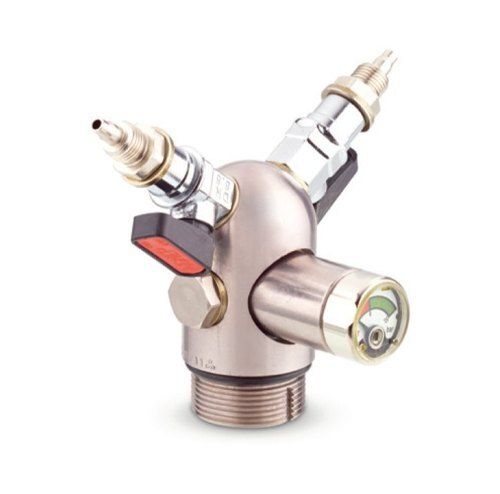An indirect low-pressure valve is a type of valve used in fluid control systems to regulate the flow of fluids, typically liquids or gases, at low pressure levels. These valves are designed to operate under conditions where the pressure of the fluid is relatively low, which can vary depending on the specific application but is generally considered to be below 15 psi (pounds per square inch) or 1 bar.
The term "indirect" in the context of valves often refers to the mechanism by which the valve operates. In an indirect valve, there is typically an external actuator or control mechanism that operates the valve. This can be a manual handle, an electric motor, a pneumatic or hydraulic actuator, or even a computer-controlled system, depending on the design and purpose of the valve.
Indirect low-pressure valves come in various types and configurations, including:
1. Gate Valve: This type of valve uses a gate-like disk or wedge to control the flow of fluid. When the valve is open, the gate is lifted to allow fluid to pass through, and when closed, the gate is lowered to block the flow.
2. Ball Valve: Ball valves use a spherical ball with a hole in it to control fluid flow. When the valve is open, the ball is rotated to align the hole with the flow path, allowing fluid to pass. When the valve is closed, the ball is rotated to block the flow.
3. Butterfly Valve: Butterfly valves have a disk that rotates on a central axis. When the valve is open, the disk is turned parallel to the flow direction, allowing fluid to pass. When the valve is closed, the disk is turned perpendicular to the flow, blocking it.
4. Check Valve: While not typically used for flow control, check valves are designed to allow fluid to flow in one direction only. They are often used to prevent backflow.
5. Diaphragm Valve: Diaphragm valves use a flexible diaphragm as the closure element. When the diaphragm is pressed against the seat, the valve is closed, and when it is lifted away from the seat, the valve is open.
FAQ:
Q. What is an indirect low-pressure valve?
Ans: An indirect low-pressure valve is a type of valve designed to control the flow of fluids, such as liquids or gases, in systems where the pressure is relatively low, typically below 15 psi or 1 bar. These valves are operated using external mechanisms like handles, motors, or actuators.
Q. Where are indirect low-pressure valves used?
Ans: These valves are used in various industries and applications, including water supply systems, chemical processing, HVAC (Heating, Ventilation, and Air Conditioning) systems, and more, where low-pressure fluid control is necessary.
Q. What are the common types of indirect low-pressure valves?
Ans: Common types include gate valves, ball valves, butterfly valves, check valves, and diaphragm valves. Each type has specific advantages and is chosen based on the applications requirements.
Q. How do I select the right indirect low-pressure valve for my application?
Ans: Valve selection depends on factors such as the type of fluid, flow rate, temperature, pressure, and the purpose of the valve (e.g., isolation, throttling, or backflow prevention). Consulting with a valve expert or engineer can help you choose the most suitable valve.
Q. What maintenance is required for indirect low-pressure valves?
Ans: Regular maintenance is essential to ensure the proper functioning of these valves. This may include lubrication, inspection for leaks, cleaning, and occasional replacement of seals or gaskets. The specific maintenance requirements can vary depending on the valve type and the manufacturers recommendations.
Q. How do I operate an indirect low-pressure valve?
Ans: The operation of these valves depends on the type and design of the valve. Typically, you will need to turn a handle, operate an actuator, or control it electronically to open or close the valve. Always follow the manufacturers instructions for proper operation.
Q. Can indirect low-pressure valves be automated?
Ans: Yes, many indirect low-pressure valves can be automated using actuators or motors. This allows for remote or automatic control of the valve, which is often used in industrial and process automation.
Q. What is the difference between indirect and direct-acting valves?
Ans: Direct-acting valves are operated directly by physical force, like a spring, whereas indirect valves are operated externally through a mechanism like a lever or motor. The choice between them depends on the specific application and control requirements.
Q. What should I do if my indirect low-pressure valve is leaking?
Ans: If you notice a leak in the valve, its important to shut off the fluid flow and address the issue promptly. Depending on the cause of the leak, you may need to tighten connections, replace seals, or, in some cases, replace the valve.
Q. Are there safety precautions to consider when working with indirect low-pressure valves?
Ans: Yes, safety is crucial. Always follow safety procedures, use appropriate personal protective equipment (PPE), and be aware of the potential hazards associated with the fluid being controlled, especially if its hazardous or under pressure.
